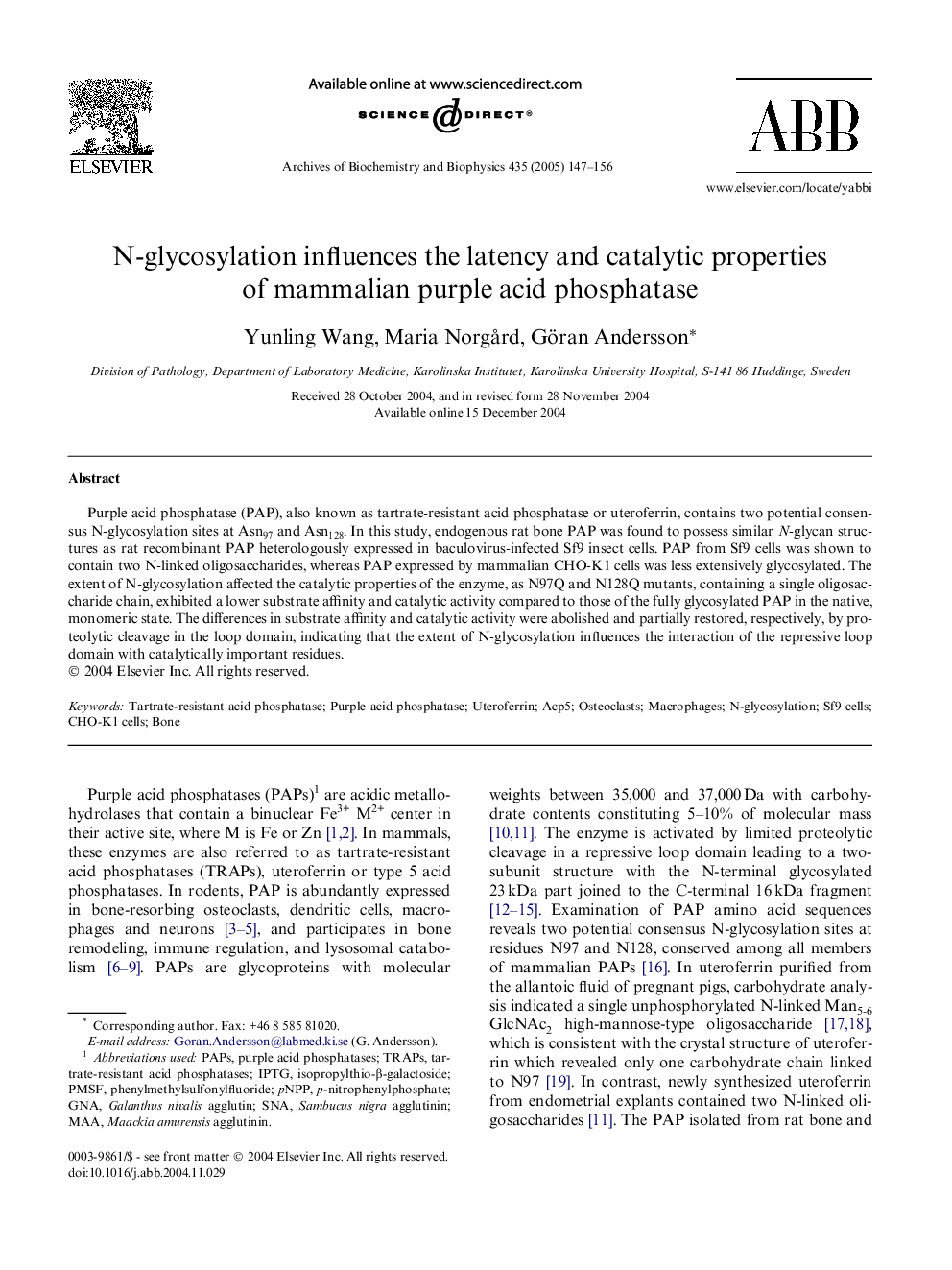| Article ID | Journal | Published Year | Pages | File Type |
|---|---|---|---|---|
| 9882316 | Archives of Biochemistry and Biophysics | 2005 | 10 Pages |
Abstract
Purple acid phosphatase (PAP), also known as tartrate-resistant acid phosphatase or uteroferrin, contains two potential consensus N-glycosylation sites at Asn97 and Asn128. In this study, endogenous rat bone PAP was found to possess similar N-glycan structures as rat recombinant PAP heterologously expressed in baculovirus-infected Sf9 insect cells. PAP from Sf9 cells was shown to contain two N-linked oligosaccharides, whereas PAP expressed by mammalian CHO-K1 cells was less extensively glycosylated. The extent of N-glycosylation affected the catalytic properties of the enzyme, as N97Q and N128Q mutants, containing a single oligosaccharide chain, exhibited a lower substrate affinity and catalytic activity compared to those of the fully glycosylated PAP in the native, monomeric state. The differences in substrate affinity and catalytic activity were abolished and partially restored, respectively, by proteolytic cleavage in the loop domain, indicating that the extent of N-glycosylation influences the interaction of the repressive loop domain with catalytically important residues.
Keywords
Related Topics
Life Sciences
Biochemistry, Genetics and Molecular Biology
Biochemistry
Authors
Yunling Wang, Maria NorgÃ¥rd, Göran Andersson,
